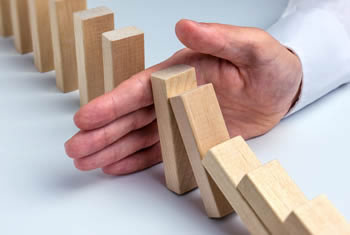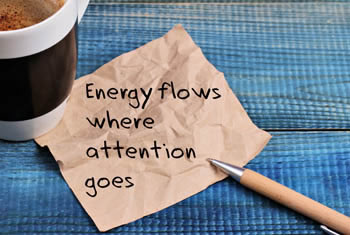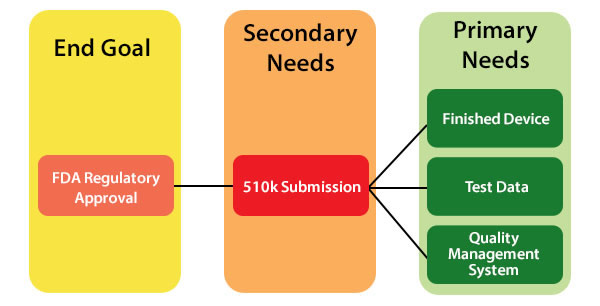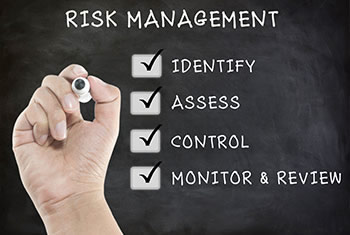
March 15, 2018
Becoming overwhelmed is common in busy startup Medtech companies and also in bigger, well-established companies. However, established companies usually spend much less time feeling this way than startups.
Why is this? It's because through experience they have developed methods to avoid it.
The best intervention is prevention.

It pays to have a standard of operation to follow when things are getting difficult.
It doesn't have to be perfect, but having any plan is better than no plan. As you go through this article, consider what your plan will look like or how it may be lacking.
Remember, begin stuck is costly, so let's avoid it. Here are some strategies to keep you from becoming overwhelmed and for maintaining high levels of productivity.
One of the most important aspects to monitor is your energy level. Too little energy is counterproductive to your work performance and too much energy can interrupt the normal workflow.
Everyone is different, so aim for a balanced energy level that works for you. Get enough sleep, eat well, exercise, go for walks, etc.

Here are some common signs that your energy level is running low.

Focus! Don't waste your energy on trivial tasks.
Aim to complete your priority goals, which can be separated into categories; primary needs, secondary needs, and end goals. Address them in order - primary first, then secondary, and end goal last.
Look at the whole picture. While it's nice to be ahead of the game, focus on today's necessities; tomorrow can wait.
Here is a simple example: The end goal is to get FDA regulatory approval for a medical device.
The primary needs are a finished device, test data on the device, and a quality management system in place.
The secondary need is to submit a 510k submission, which includes a range of tasks to complete once the primary needs are met. Only then, can the end goal of regulatory approval be achieved.
Using charts is an easy way to organize and map out needs and goals. It sets the foundation for a more detailed document and can be used as a visual reminder.

As a start-up, you need to define your limits so you can know where you're operating. Are you always on the edge, or over your limits? Do you even know what your limits are?
It's important to push ourselves and as a startup, you'll be pushing your limits often. Do not normalize these behaviors -- there are downsides: burnout, counterproductivity, etc.
Indicators of pushing over limits are unique to each person; they vary from feelings of being out of control, to being outside your comfort zone, or even physical strain.
Knowing what your limits are will allow you to confidently delegate or take breaks when needed, and will give you better satisfaction. This is your dream, not your nightmare.
Develop a project plan with tasks, milestones, and accountability assignments.
Use the power of the internet to design and plan and do your research; make sure your proposed device is viable for the market, look at patents, material costs, and your potential competitors.
What is going on in the world of your device? Get the big picture.
Keep acknowledging the project plan. Create visual versions of the plan and place them around the workspace.
Develop a system to measure your progress. Then, set team meetings to monitor progress and ensure everyone is where they need to be. This process is results oriented! It enables you to see your progress, and see what needs to be done.

One contributor to high energy for start-ups is risk. High energy tasks burn people out quickly.
When it comes to risk-taking, strive to be strategic and energized. Making calculated risks at the right time and in a good frame of mind will make it easier to bounce back into the normal workflow more quickly.
To stack the deck in your favor, consider defining your risk tolerance well ahead of time. What outcomes do you consider acceptable, marginal, or unacceptable?
Include key stakeholders when defining these levels, so that when you are inevitably faced with a tough decision, you can act with authority.

Integrating a project risk assessment with contingency plans into your project work plan will help. To create these, gather input from many sources, including your team, mentors, and network.
Draw on your past experiences and insight from being overwhelmed before, and heed the red flags. What could you have done to prevent this? See our post "Painted into a Corner; Common Product Un-developments" for ideas.
Proactive risk mitigation means less time intervening, more time leading, and lower costs.
Don't wait too long to check in with your network and especially your mentors.
Even if you don't need help, talk to them and be generous in giving advice. Participate in discussions and share your challenges and successes. Your mentors are experienced and can help you avoid rookie mistakes.
It also really pays to have a fan -- someone not related to your product, like a parent or a friend. They can help keep you energized and inspired.
Got a rival? Some friendly competition can be particularly motivating.

Do some leadership training to learn about empowering your team. A good leader tackles elusive ideas, pays attention, and is instrumental in keeping things on track.
Don't get hung up on mistakes made. Express your appreciation for their work, and give generous boundaries to work within.
Leaders can keep their company out of a rut by developing a working system that ensures team empowerment.

Here at Koven, we empower our team members with well defined roles and task schedules. Each employee knows what is expected of them and there are no barriers.
We highly value communication and have weekly team check-ins, an internal newsletter, and monthly team outings.
Some companies do regular team building exercises and have an internal instant messaging system. While your company may differ, these are some ideas to integrate into your model.
Take time to find out what works for your team.
Not becoming overwhelmed is an active process; so be on guard, and be prepared.
I was inspired to put my Engineering skills to work in the Medical Devices arena after learning about my Great Grandfather's transformative medical practice in the city of Winnipeg. I enjoy the collaborative nature of the Winnipeg Device space and the people that make up this community.

© 2019 Koven Technology Canada Inc.